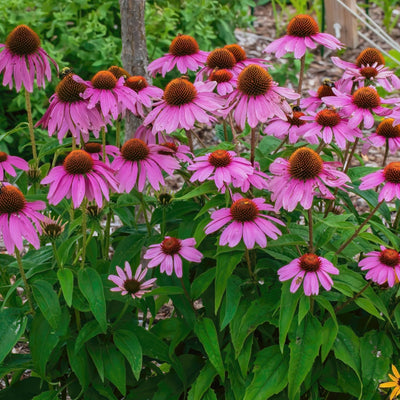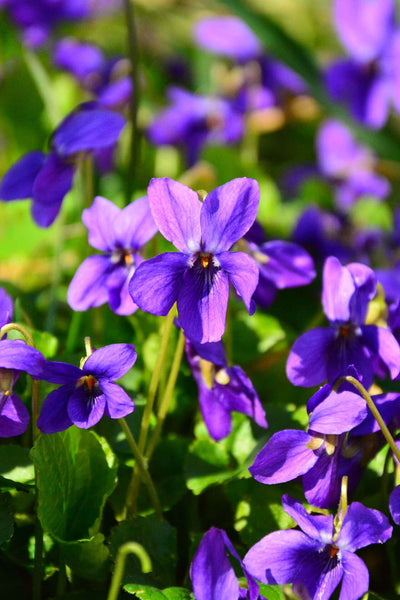A Gardener's Guide on How to Shield Plants from Sweltering Sun Heat
In your garden, summer is the most challenging time of the year. In the summer, the harsh weather conditions can harm your plants. This can lead to wilting, dehydration, and the possibility of death. The good news is that, with due care and preparation, any garden can be protected, and plants can be made to thrive during the months of extreme weather. In this guide, we will discuss how to prevent plant death from overheating and other tips needed during the summer months to help plants thrive.
Why Protect Plants During Summer Months
The summer heat wears on even the most mentally prepared individuals. Once set in, temperatures that soar above 90°F spell trouble, not just for you, but also the environment around you. Plants also suffer. Forget thriving—if they find it impossible to breathe, neglect and overexposure would cause them to shrivel, fall, die, and vanish from existence. They say a garden of green and blooming flowers is a delightful and frantic fantasy. It is for you to decide if it is a fantasy you would enjoy.
Best Flowers and Plants That Can Withstand the Summer Heat
Certain plants seem to enjoy the warmer weather, like these:
-
Echinacea Purpurea: A perennial that is ideal for summer gardens, it thrives during the summer due to the hot weather and gorgeous yellow flowers.
-
Oenothera: This plant is known to also grow at high altitudes and will continue to blossom even during summer.
-
Geranium: In hot and dry conditions, these flowers are very tough and do well in outdoor containers, with blooming flowers still flourishing.
-
Violets (Viola): Violets don't do well in full sunlight but are more able to tolerate extreme heat if watered frequently.
-
Polygonatum, Solomon’s Seal: This flowering plant works very well in extremely hot and dry conditions, as long as the soil does not dry out.
Plants Stemmed During Summer Blazing Sun
Frequent Glare Watering
Plants during the day lose moisture faster due to evaporation. The main concept is to not let the plant rely on moisture supplied by the atmosphere. In July and August, heat is persistent; one should try to avoid watering at this time. It is best to water in the morning and in the evening.
Container plants should also be watered deeply, as this is the only way to ensure moisture reaches the roots. Only during dry conditions should a plant be shallow watered, and then only to fill the bottom of the pot.
Offer Protection from Scorching Sun
Although plants require sunlight to grow, numerous prolonged hours of exposure can hinder certain plants. The secret here is moderation. Try to reposition your plants to locations that have light to partial shade. Filtered sunlight can also be used. This measure will also keep your plants from overheating, especially between midday (noon) and 3 PM.
If your garden is devoid of shade, try planting larger flowering plants, shrubs, and trees that will provide shade to smaller delicate flowering plants.
Maintain Moist and Loamy Soil
Among the important preventive measures to be taken in case of unfriendly hot weather is the conditioning of the soil. Soil that is sufficiently aerated, moist, and warm. Moisture is retained from the soil and kept within the soil profile. Use any organic matter, preferably in the form of mulch. A layer of compost will keep the soil cool by preventing moisture loss and moisture retention. The soil will not cement under the heat but will remain aerated and cool.
Regular Feeding
Healthy and strong plants spend their summers in nutritious soil. Protect them by feeding them appropriate boosters. A slow-release fertilizer for perennials works great, and liquid fertilizers are suggested for other fast-growing plants.
No Globing Together
Planting plants too close to one another causes competition for water, nutrients, and sunlight. Make sure every plant has enough spacing to breathe and grow. Optimal spacing enables air to circulate the plants and minimizes the fostered diseases, such as fungal growth in humid, hot environments.
Pruning and Deadheading
Keeping the most spent flowers and light pruning helps plants stay healthy by preventing them from putting energy into unproductive growth. Pruning should also minimize the sun-catching leaf surface. This helps to relieve the plant from excessive sun during heat stress.
Shield Your Flora This Summer with TN Nursery
At TN Nursery, we provide a range of plants for sale. Choosing an option from our collection that can withstand searing heat will be easy! From Yellow Coneflowers to Solomon's Seal, we have it all! This summer, be sure to pay a visit to TN Nursery for incredible offers. Your summer will always be bright with our deals.
Any Summer Plant Heat FAQs
How do you protect plants in 100-degree weather?
While it is extremely hot, to take care of plants, you need to water them often, give them shade, and keep the soil damp. When possible, check the plants every couple of hours. You can also bucket the plants and water them very early in the morning or much later in the evening to keep water from evaporating in the hot sun.
What is the 70/30 rule in gardening?
The 70/30 ratio is the ideal amount of shade and sun a plant should need. Most of the day, 70% should have the sun blocked in some way. 30% of the day can have direct sunlight. This helps ensure the plants do not have too much light and can grow.
How hot is too hot for plants to survive?
The highest temperature for most plants is 90°F outside. Too much light can make plants lose water quickly. Once plants lose water, they can die. In these high temperatures, it is very important the plants are lightly watered and not covered in direct sunlight.
What to do if your plant is getting too much sun?
If you think that your plant is getting too much sun, try to move it to a darker area. You can also protect the plant from the sun by using shade cloth or other garden structures such as trellises, especially from the midday sun. Sunburn effects can be reduced by giving adequate water to the plant.
Should I water my plants every day in 100-degree weather?
In 100-degree weather or extremely hot weather, you may need to water the plants every day, especially the ones in pots. It is best to water the plants deeply so that the roots will grow strong. Watering too shallow will only dry the roots, which is not advised. Also, remember to check the soil moisture to avoid over-watering.
What soaks up sun in a plant?
The main parts of a plant that absorb the sun are the sunlight leaves. With the help of photosynthesis, plants turn sunlight into energy. The more surface area in the leaves that contain chlorophyll, the more sunlight the plant will be able to capture.




